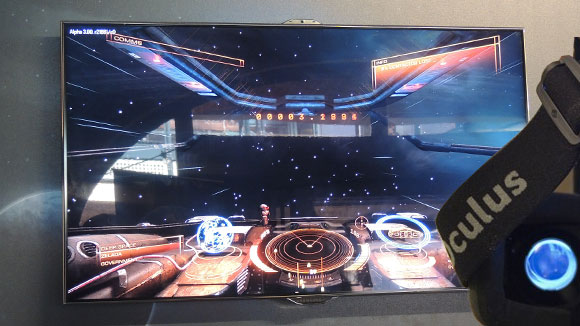How virtual reality could revolutionise PC gaming
Get set for the headsets — it's going to be a thrilling ride

It seems that virtual reality's time has come — again. With various manufacturers and hobbyists all building head-mounted displays and body tracking systems, PC games could soon be getting a whole lot more immersive.
Virtual reality hardware first became popular in the nineties, but the technology massively let it down and it faded into obscurity. Now though, with the likes of the Oculus Rift and Razer OSVR on the scene, we're getting to see just how much head-mounted display technology has progressed.

Suitable for space
A quick search on YouTube will show that the Oculus Rift is very popular among players of Elite Dangerous. The setting of any space sim is ideal for VR because your in-game situation is sitting in your ship looking out onto the cosmos through the canopy. Replace the cockpit with your bedroom, and the canopy with your VR headset and you get the idea. Even the creator of Elite Dangerous, David Braben, thinks it's a match made in heaven.
Elite Dangerous has really shown what is possible for a game that was built specifically (but not exclusively) for virtual reality. When a player fires up the game and dons their headset, they are instantly able to look around the cockpit, then look down and actually see their in-game body, complete with virtual hands on virtual controllers that react as you control the ship's movements via your PC. Expect to see much of the same experience from EVE: Valkyrie.
Reality bites
Even today's much improved state of virtual reality hardware is not ideal — the video bandwidth requirements for VR rule out wireless technology for a start. That means your head is tethered to your PC, which limits the distance you can move away from it. Even though most head-mounted displays have a 1080p resolution, when it's that close to your eyes, and distorted by internal lenses, 1080p is really a minimum specification rather than something to boast about. To provide video streams greater than 1080p, which must be delivered to each eye, of course, we'll need some serious graphics processing power.

Also, as any gamer knows, the top-of-the-line first-person shooters require the absolute best screen response, and so the displays crammed into a headset are going to need to keep up with these refresh rate demands. This is actually something that AMD's FreeSync or Nvidia's G-Sync could help with.
Sign up for breaking news, reviews, opinion, top tech deals, and more.